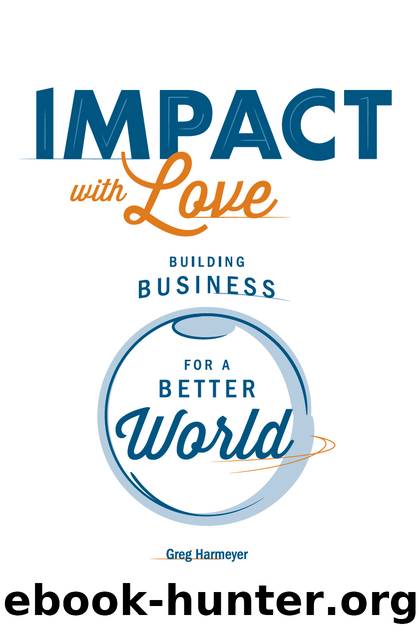Impact with Love: Building Business for a Better World by Greg Harmeyer

Author:Greg Harmeyer
Language: eng
Format: epub
ISBN: 9781639090211
Publisher: An Inc. Original
Published: 2023-11-15T00:00:00+00:00
PILLAR 2: ROLE-BASED
A significant limitation of traditional structures is their emphasis on fixed positions, titles, and levels, and the associated formal promotions that accompany them. All of these things, while useful, restrict organizational agility. By their very design they often drive the focus of work toward responsibilities and competencies associated with the respective level. The problem with that is the work orients internally to a limited set of expectations that can be both rigidânot adapting to the realities of workâand quickly outdated. Highly structured positions donât have the malleability required to operate in a fluid environment. Competencies, incentives, and performance management systems designed around these positions restrict expectations and growth. Position-based incentives and performance systems orient oneâs energy toward those incentives and review criteria; ideas like âuse good judgmentâ or âdo what is best for the clientâ get drowned out by the structure of the positions themselves. Success and growth for individuals becomes primarily defined by a well-intended, HR-developed structure that simply canât keep pace with the dynamics of the business.
Further, traditional hierarchies and reporting structures make it difficult to create dynamic teams that bring the best skills and talents to the situation at hand, unencumbered by who has what title. Assignments are often made based on titles and organization structure and decision-making and relative importance of opinion flows with them. The relative weight of input is associated with the titles one might hold. This restricts innovation and growth and limits agility.
An alternative to all of this is a role-based organization. What does it mean to be role-based? Simply put a role-based organization emphasizes situational context over static structure. A role-based organization breaks down work and defines each package of work as a role, with associated responsibilities and authorities. Doing this allows you to move away from static titles and positions and allows people to step into a variety of roles that are independent of promotions. One doesnât need a designated title to take on certain scopes of work or to join teams. This fluid approach to work allows people to grow and stretch while also allowing the organization to scale and adapt to real needs. Role-based work cares less about rigid promotion processes and more about the work at hand and the individuals who might be available and interested to do it.
The role-based organization has responsibilities, authorities, and accountabilities defined by the role. Roles represent opportunities for individuals to create value. Sometimes they are stretch roles, sometimes they are designed for growth, and sometimes they are deep areas of expertise and experience for an individual. What is key to role-based is itâs not driven by a central structure limiting who can do what or defining who has what authority. In conjunction with principles (like âperson closest to the client makes the callâ and âact for the long termâ) and other DDA pillars, roles allow an organization to be agile and to adapt rapidly.
To help facilitate our role-based organization, we use role cards. Each role card outlines the role at
Download
This site does not store any files on its server. We only index and link to content provided by other sites. Please contact the content providers to delete copyright contents if any and email us, we'll remove relevant links or contents immediately.
AI Native Enterprise: The Leader's Guide to AI-Powered Business Transformation by Yi Zhou(273)
Challengers: How a New Breed of Leaders Collaborates and Wins in a Hyper Competitive World by Ben-Attar Saar(267)
Time is Now: A Journey Into Demystifying AI by Raj Verma(232)
Stoic at Work by Annie Lawson(219)
Change Management that Sticks by Barb Grant(205)
Leadership Team Alignment by Frédéric Godart(190)
Impact with Love: Building Business for a Better World by Greg Harmeyer(184)
Startups Grow With People by Dagdeviren Ozan(171)
People and Data by Redman Thomas C.;(168)
Reconstructing Inclusion by Amri B. Johnson(167)
Leading and Managing Change in the Age of Disruption and Artificial Intelligence by Donald Mathew;(163)
You're Too Smart for This : (Beating the 100 Big Lies About Your First Job) by Michael Ball(161)
Corporate Fraud Exposed by Baker H. Kent;Purda Lynnette;Saadi Samir;(158)
9 Powerful Practices of Really Great Teams by Stephen E. Kohn(157)
How to Speak Human by Jackson Dougal;Jackson Jennifer;(150)
Change Your Business with NLP by Lindsey Agness(148)
The Executive Warrior by Ng Victor;(145)
Leadership Transitions by Richard Elsner(140)
Outpacer by Alex Holt(138)
